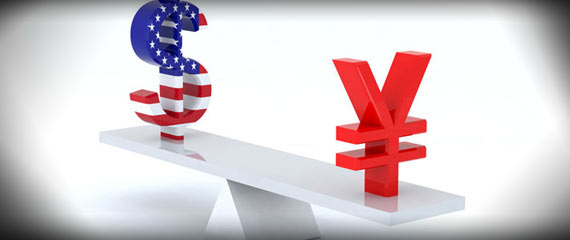An Overview of USD & JPY
An Overview of USD & JPY
Submitted by adil on Wed, 01/01/2014 - 15:04
Tagged as: Forex Trading , Forex Trading
Japan is a country whose people are renowned for their resilience, hard work and conviction. The comeback of the tiny country from almost total destruction in World War II is evidence in itself. Not only does the country beat these odds, but also the odds of lack of natural resources to stir phenomenal economic growth like Middle Eastern countries. Yet, Japan is one of the biggest economies in the world, hosting dozens of well known multinationals, exporting and importing to the tunes of billions of dollars, producing highest quality products and owning a well skilled human resource.
For 40 years after the World War II, Japan experienced exceptional growth. Where it lacked in natural resources, it relied heavily on technological developments, strong work ethic, innovative production techniques, high rate of national savings and close collaboration between government and businesses.
The Japanese Yen is a heavily traded currency in Asia. It is also the fourth most actively traded currency in the world. Analysts in 1980s had predicted the Japanese Yen to gain the dollar's reserve currency status and expected that the Japanese economy may become the biggest economy. However, due to continued retarded growth, deflationary pressures and turmoil in markets of Japanese output negatively affected these hopes.
The result of Japan's retarded growth has forced Japanese central bank to reduce interest rates to near 0%. This was done with an aim to kick start growth and encourage businesses to pursue aggressive business policies. This reduction in interest rates has made Japanese Yen an excellent carry trade currency. It is one of the major reasons why the pair USD/JPY is traded a lot in the financial markets.
The USD/JPY pair boasts exceptional liquidity and also features very low bid-ask spreads. For many traders in USA, the 24 hour trading platforms provides them the capability to exploit Yen related positions in night hours, as Yen is heavily traded in Asian business hours. The Japanese economy heavily relies on imported commodities because the country does not have its own natural resources. Therefore, rise in prices of commodities depreciates the Japanese Yen and creates gaps for trading in USD/JPY pair.
Traders use Japanese Yen primarily for carry trade opportunities. When volatility is low and in periods that are relatively quiet, the carry trade method of gaining from Japanese Yen is most popular. Therefore, whenever the situation is ripe for carry trade, traders sell Japanese Yen, and the currency comes under severe selling pressure. One way the day-traders can gauge the popularity of carry trade is by assessing the method's popularity among hedge funds and institutional investors. Similarly, when the traders reverse their carry trades for profit taking, the Japanese Yen comes under significant buying pressure.
These buying and selling pressures, appreciate and depreciate Japanese Yen accordingly and provide a good line of sight with regards to a trend in the USD/JPY pair for day-traders to exploit. A risk factor that all traders keep an eye out for is the measures taken by Japanese central bank, as it actively intervenes in the forex markets to affect Japanese Yen.

Register For...
Free Trade Alerts
Education
1-on-1 Support
eToro Copytrader Tips